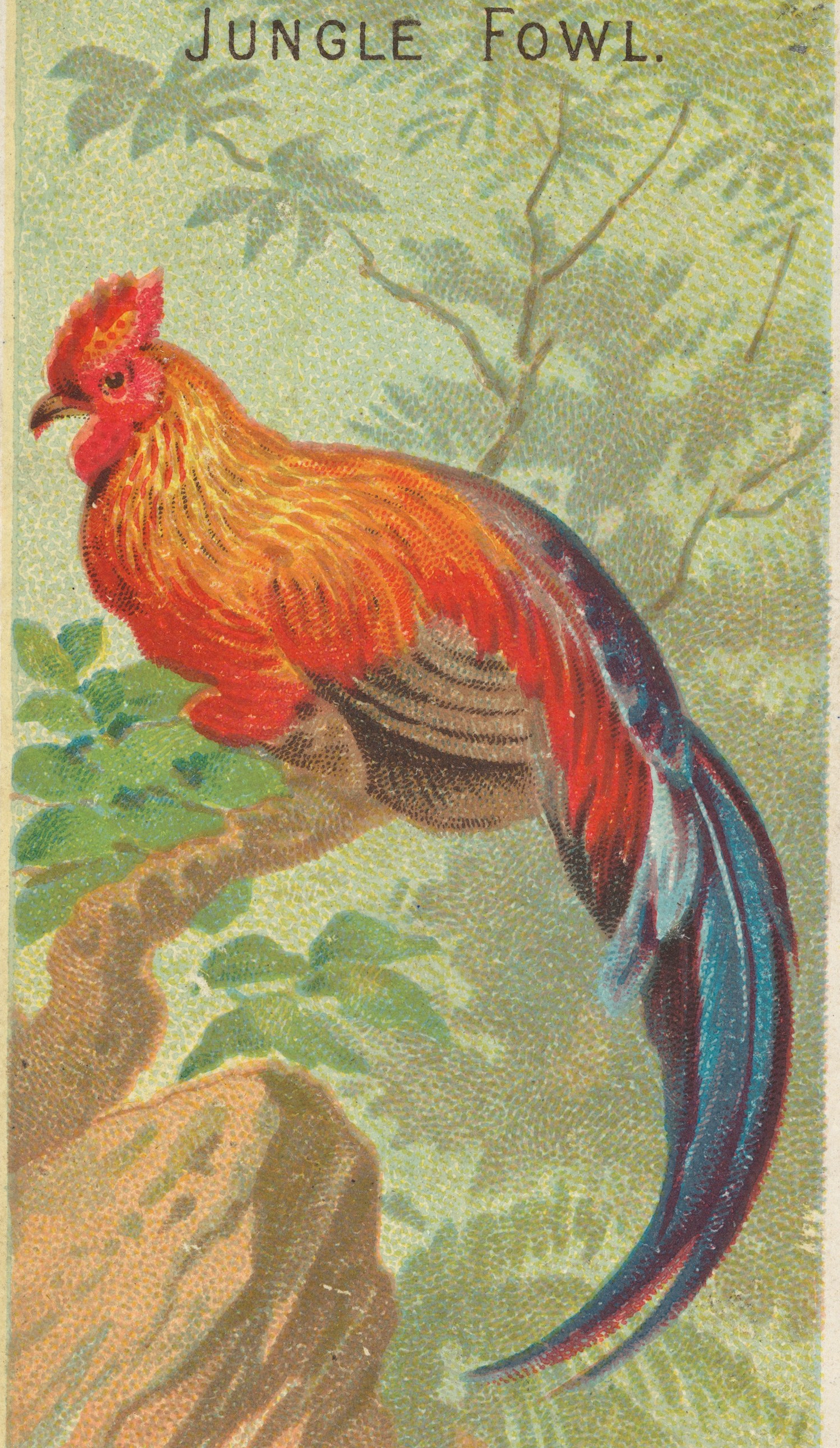The evolution and origin of the chicken.
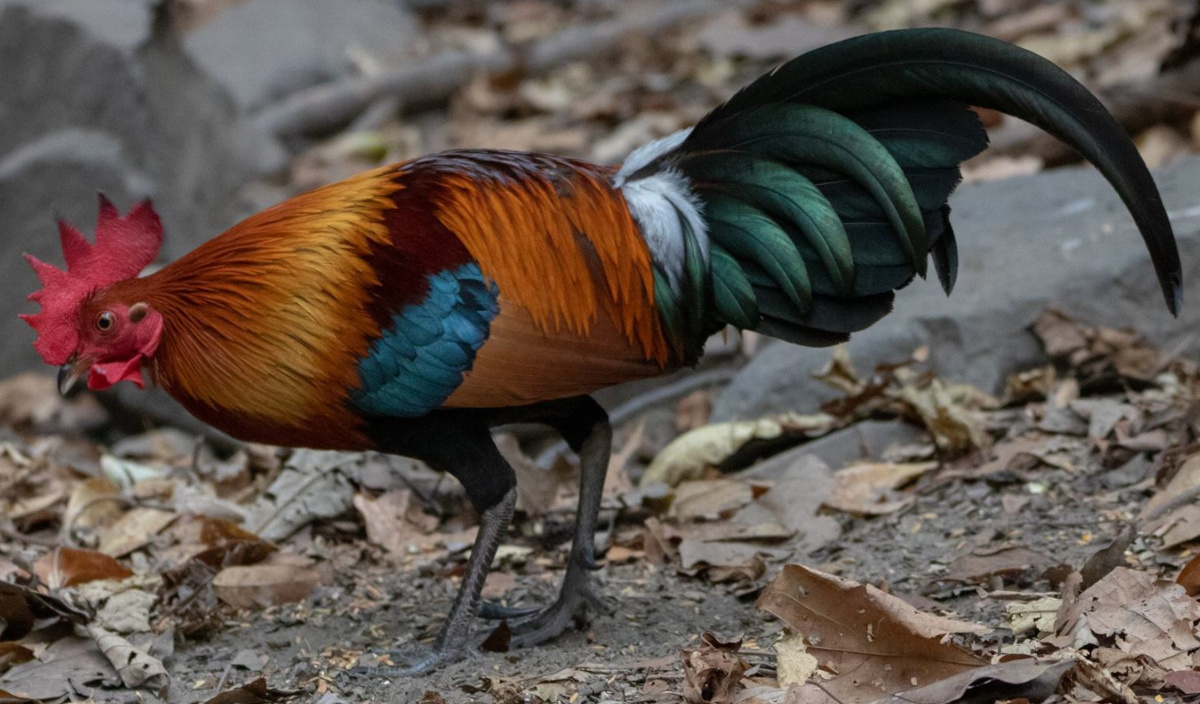
The origin of our domestic animals has always been an interesting subject and this is especially true with chickens. Every modern chicken can trace it's roots back to the Red Junglefowl on the Indian subcontinent and South East Asia.
Table of Contents
The origin and domestication of chickens and other poultry has been of interest to people since Roman times. In AD 1600, Ulisse Aldrovandi wrote the first known text written about the history husbandry and varieties of domestic chickens at the time.
Subsequently, using classical texts, passages from the Bible, art and artefacts depicting chickens we have been able to plot a relatively accurate timeline of the domestication of chickens. Sacred chickens were chickens raised by priests in Roman times.
Below: A drawing of Red jungle fowl from Ceylon in 1879.
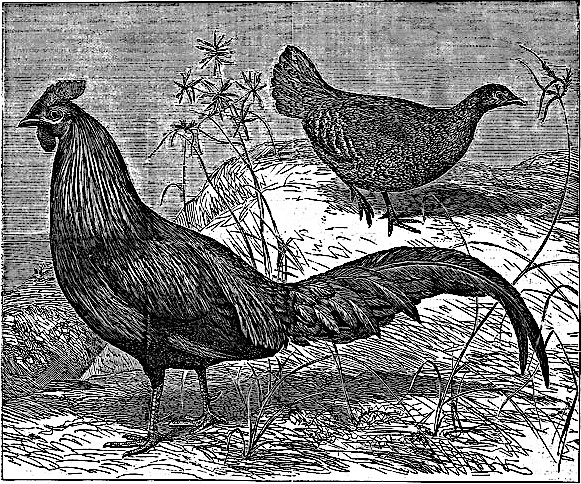
Scholars, archaeologists, researchers and genetic testing have managed to trace both the dates of primary chicken domestication centres and the routes of dispersal across the world.
Bones, classical texts, the bible and art have all been helpful in tracing both the development and domestication of the modern chicken.
Why did humans domesticate chickens?
Humans and our predecessors had been hunting birds and collecting eggs in spring for tens of thousands of years. Domestication was a natural progression as humans began to settle and trade.
Humans domesticated the chicken to provide a reliable source of meat, eggs and feathers. The big advantages of chickens is they are not competitive for human food sources and are easy to keep.
As human populations moved from being hunter gatherers to farmers we had grain stores to be able to feed to animals making the process sustainable.
Chickens have cultural and religious significance as well as being a source of meat and eggs and this has contributed to their global distribution. The descendants of those early domestic fowl have been dispersed to every country in the world in overlapping waves and by multiple groups of people during for at least two millennia.
What is the original breed of chicken?
The original chickens is the Red Junglefowl, a tropical member of the Pheasant family that lives in South east Asia.
Red jungle fowl were not a migratory species and typically had small home ranges with one male and a few hens.
Below: This is the Red Junglefowl today, still found wild across South East Asia. These chickens look the same as they did thousands of years ago. You can see it is similar to black red game popular with some chicken keepers today.
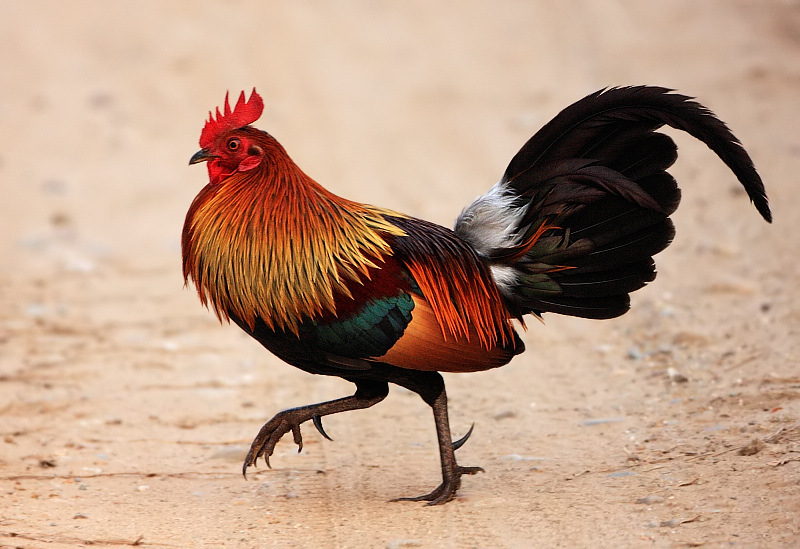
This is what chickens have looked like for thousands of years before domestication.
Below :This is a modern game chicken and apart from the slightly longer legs is almost identical to the Red Junglefowl above. Even down to the colouring and the patterns on the neck.
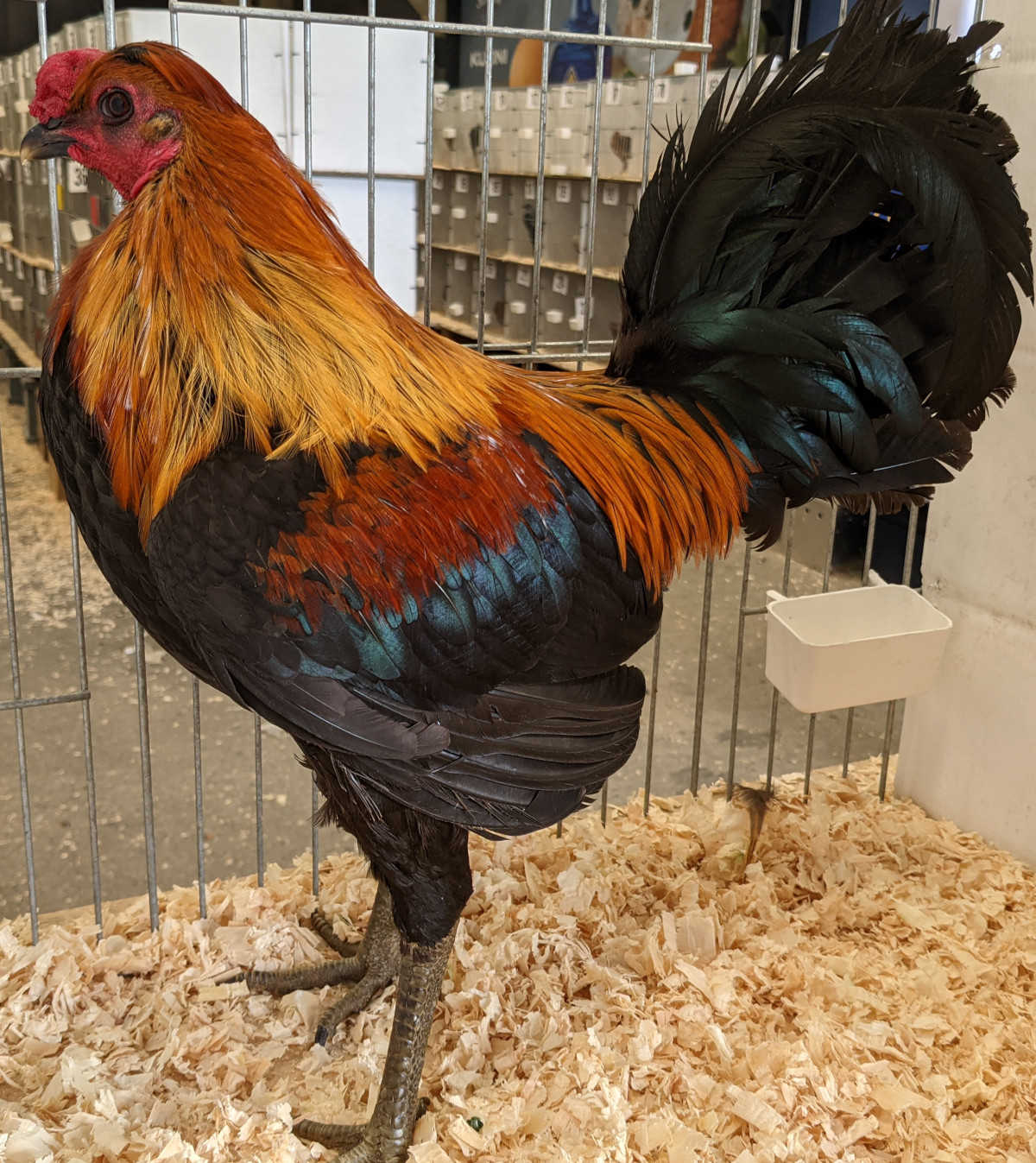
It had to be humans that spread chickens across the globe as they do not fly well over long distances, and are not equipped for swimming in any capacity. They lack webbed feet and glands for the production of water proofing oil and could not cross water more than a hundred metres wide at most.
Recent research suggests modern chickens have been bred with the Grey Junglefowl in the past, either accidentally or on purpose.
The yellow skin gene is absent in the wild Red Junglefowl but is found in some domestic birds, This suggests hybridisation with the Grey Junglefowl sometime during the domestication process.
When were chickens first domesticated?
Archaeologically speaking, the earliest undisputed domestic chicken remains are bones associated with a date of approximately 5400 BC from the Chishan site, in the Hebei province of China.
Domestication events specifically targeting the Red Junglefowl occurred on several occasions between 5400 B.C. and 2000 B.C.
A timeline of chickens domestication:
- The oldest known Gallus gallus remains have been recovered from 12,000 year old deposits at Nanzhuang in Northern China but these were almost certainly hunted as food and not domesticated.
- The domestication of chickens (Gallus gallus domesticus) began at least 5,400 years ago by the segregation and taming of a few individuals acquired from wild Junglefowl in Southeast Asia.
- Thailand has previously been confirmed as a domestication centre for Junglefowl, The earliest Gallus gallus samples to be identified in Thai archaeological contexts are dated to ca. 4000 B.C.
- Peoples in the Ganges region of India both hunted Red Junglefowl and collected their eggs as early as 7,000 years ago but no evidence of domesticated chickens older than 4,000 years have been identified in the Indus Valley.
- Although the exact date of domestication is unclear, archaeological evidence places the chicken in human settlements in Indo-Pakistan region by 3250 B.C. and in Egyptian tombs dating as early as 2000 B.C.
- Chickens were first transported into the Pacific by Lapita peoples moving eastward into Remote Oceania at least as early as 3000 B.C.
- Chickens and eggs were used as food throughout the Roman empire from 625 BC to its fall in AD 476.
- Domesticated chickens were first brought to Europe and what is now the United Kingdom in the Iron Age between 1200 B.C. and 600 B.C.
- In AD 1600, Ulisse Aldrovandi wrote the first known text focused exclusively on the history and varieties of domestic chicken.
- In 1932, an onyx seal was found on a tomb dating back to the 7th century BC, featuring a fighting rooster and the inscription: “Belonging to Jaazaniah, servant of the King”.
Map showing where chickens come from originally and where they were first domesticated.
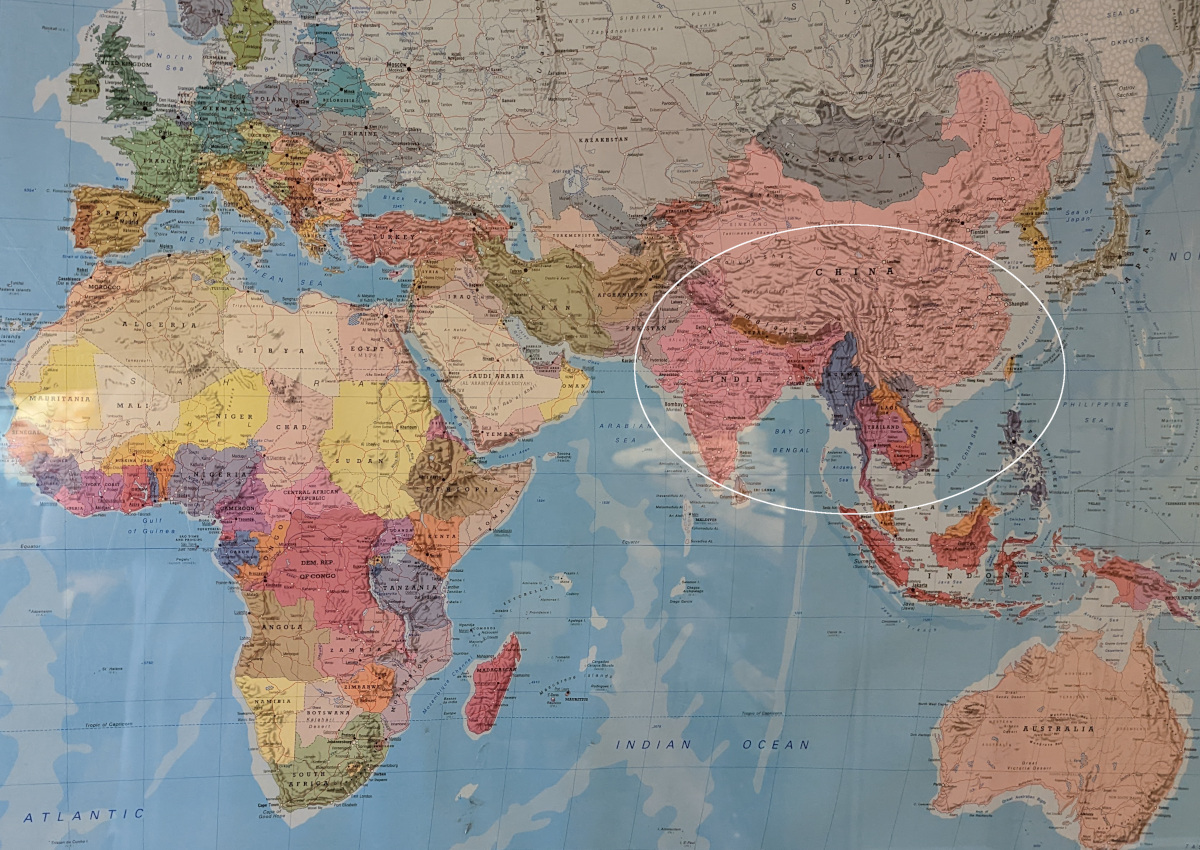
After their initial domestication, chickens spread across South and east Asia where they interbred with local Red Junglefowl subspecies and other Junglefowl species.
Domestic chickens in China, Southeast Asia and South Asia now all possess hybrid genomes that derive up to 22.4% of their genetic make-up from Red Junglefowl subspecies other than G. g. spadiceus.
The range of the Junglefowl species stretches from northeast India eastwards across southern China and down into Malaysia, The Philippines and Indonesia.
Junglefowl are established on several of the Hawaiian Islands, but these are feral descendants of domestic chickens. They can also be found on Christmas Island and the Marianas.
These regions have their own subspecies of Red Junglefowl. Some examples include:
- Gallus gallus Indochina.
- Gallus gallus murghiade (This sub species has contributed as much as 10% of the genes in some chickens).
- Gallus gallus bankiva Java - Bankiva Fowl.
- Gallus gallus jabouillei found in Vietnam.
- Gallus gallus murghi from India.
- Gallus gallus spadiceus Burma (Now known to have provided around 22% of the genes of the modern chicken).
Three members of the genus, the Sri Lanka Junglefowl (Gallus lafayetii), Grey Junglefowl (Gallus sonneratii), and the Green Junglefowl (Gallus varius) do not produce fertile or viable offspring when bred with the Red Junglefowl, suggesting that it is the sole ancestor of the domestic chicken.
How similar is the Red Junglefowl to modern domestic chickens?
There are some species of chicken that still look like the Junglefowl. Black red game look exactly like Red Junglefowl but with slightly longer legs.
Modern chickens are remarkably similar to Jungle fowl:
- Male and female Red Junglefowl show the same sexual dimorphism as modern domestic chickens.
- Males are much larger than the hens.
- Males have large red fleshy wattles and comb on the head.
- The males of both Junglefowl and chickens are more showy with long cape feathers around the neck and lower back.
- In both the tail is composed of long, arching feathers.
- Black feathers shimmer with purple and green in good light.
- The female's plumage is typically evolved for camouflage.
- The hens look after the eggs and chicks.
- The hens have much smaller comb and wattles.
- The "cock-a-doodle-doo" call is common to both, so much so that you would not be able to distinguish the wild from the domestic unless you could see them.
- The lower leg of both have a long spur.
- They have a complex call and behavioural structure and a distinctive alarm calls for aerial or ground predators.
- Males of both the pre and post domesticated species make a food-related display called 'tidbitting' for the females.
- Flight in both Junglefowl and domestic chickens is almost completely limited to reaching their roosts at sunset or escaping from ground predators and danger.
Below: A painting of a red Junglefowl Cockerel perching on a branch in the forest.
